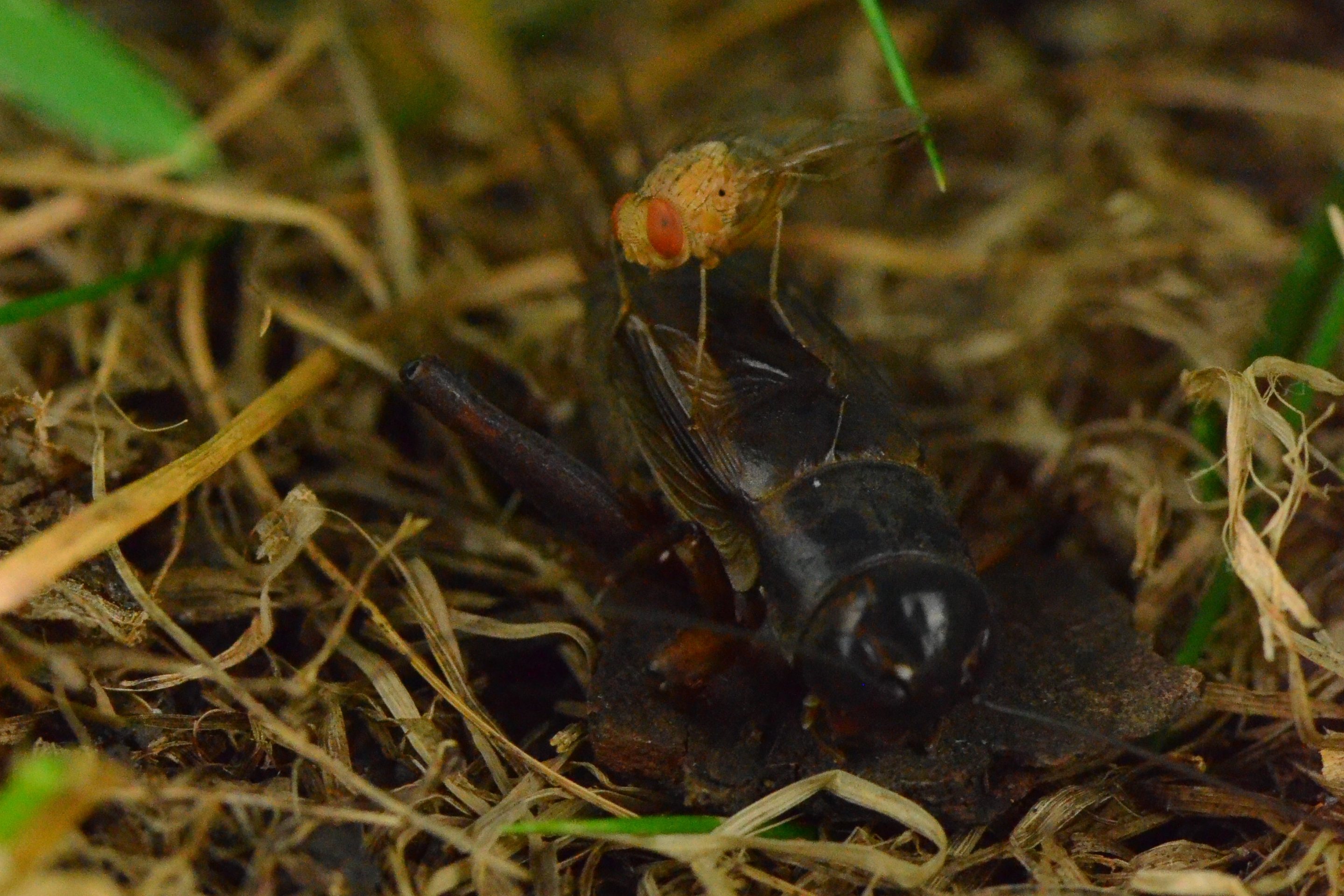Watching ‘Touching The Void’ Should Qualify As An Extreme Sport
12:52 PM EDT on June 30, 2021

Welcome to Cold Comforts, a recurring column in which Soraya Roberts writes about the grim, harrowing, and downright bizarre movies and television shows that she nevertheless can't stop watching, over and over again.
The nostril, the left one, that’s the thing I remember most. Mountaineer Joe Simpson’s left nostril. It’s too big—like a crevasse, you could say. I don’t think he was born that way. It looks reconstructed. Like the left side of his nose succumbed to frostbite, and skin from maybe his hip or his inner arm or his wrist or his backside had to be grafted on. That nostril looms large in Touching the Void—Kevin Macdonald’s 2003 documentary based on Simpson’s book about the climb that nearly killed him—because his face, one of the very first things you see on screen, takes up the entire frame. What you get is this kind of good-looking British dude with his weather-beaten face from years of inadvisable extreme sporting, pushed right up against the lens as he says, “We climb because it’s fun. It was just brilliant fun, and every now and then it went wildly wrong.” He smiles and kind of laughs, but not really because he’s British. “And then it wasn’t.”
I don’t know how many times I have seen Touching the Void. If it’s not the film I have seen the most in the world, it is definitely the documentary. I have watched Touching the Void when I have felt like shit, when I have been sick, when I have been well, when I have been happy, when I have been doing other things, when I have been in bed, on the couch, even in the bathroom—in any situation, it is ideal. I have pressed this documentary on pretty much everyone I know. Everyone ends up liking it, but I’m not sure anyone adores it quite as much as I do. Nor am I entirely certain why I even keep returning to it. Like any kind of love, there is always some element of mystery to the whole thing. But the rest of it I can try and break down, so here it goes:
One of Touching the Void’s great strengths is its economy of storytelling. Literally, in under one minute and 30 seconds, the entire narrative is set up. It starts with the sound of wind, of breathing, of breaking ice and snow, of metal. We watch a guy from down below climbing up above. Cut tight to Simpson’s face saying the thing about climbing being fun, then cut to black. Then two black title cards with white script: “In 1985, 2 young British friends, Joe Simpson and Simon Yates, travelled to a remote corner of Peru.” Beat. “Ambitious mountaineers, their aim was to conquer the unclimbed West face of a notorious 21,000-foot peak—Siula Grande.” Next screen. “Their story has become part of mountaineering legend.” Chills. I’m serious. Even just reading that makes me want to watch it again. That chain of events, the crackling taunt of it all, is the key to why Touching the Void is unparalleled: it’s 106 minutes of fucking edging. This film is the tease to end all teases. It is itself an extreme sport.
I don’t drink, I don’t smoke, I don’t do drugs. Your options for getting high are limited under these circumstances. There’s sex, and there’s danger. I’m risk-averse so that drops out the danger part—I’m not going to climb the Siula Grande just like I’m not going to jump out of a plane (I barely want to sit on a plane). I mean, sex, sure, fine, but there’s only so much of that you can do. That leaves extreme sports, any extreme physical activity really, meaning any circumstances in which the human body is pushed. Not mine, though. My scope as a human being is very limited. I mean watching it. And I don’t mean sporting EVENTS. Those are too controlled. Crashes aren’t, which is why I like crashes (I know, it’s gross, but I wouldn’t CAUSE a crash). Which is also why I like Touching the Void. I mean, it’s also why these guys climb. They say it themselves: because of the danger. Because at any point it can turn to shit. It’s that threat. That tease.
You would think that in a 106-minute documentary, it would take a significant amount of time for the climbers of a 21,000-foot mountain to reach the summit. Fuck you: 18 minutes. It takes less than one fifth of this film about climbing a mountain to dispense with the climbing of the mountain. Just like all the good times in this thing, the summit is the anti-climax. “I don’t like the summit because I know 80 percent of accidents happen on the way down,” Simpson says as a kind of side note. In my humble opinion, not enough of a fine point is put on this rather alarming statistic, but it is one of many hard-as-hell breadcrumbs that have been dropped all the way up that mountain. Here are some, if not all, of the others (remember this is happening within the first 18 minutes): a pervading soundtrack the likes of which you only really hear in action thrillers where everything is about go to hell; the mention that every exhibition up this mountain has failed, which makes Simpson chuckle, “My feeling was, well, we’ll just do it. We’re better than them”; the mention that the sort of climbing they are doing, alpine-style (ropes and complete trust in your partner), allows for “no margin for error— if you get badly hurt, you’ll probably die”; dehydration; a storm causing a 200-foot climb to take six fucking hours; Andean snow being a very particular kind of “precarious, unnerving” powder that holds—forming spectacular “meringues, mushrooms, flutings”—until it doesn’t; finally, the religious choral music that swells when Simpson and Yates reach the summit, because religious choral music is never not foreboding to me.
I call them breadcrumbs, but they’re just details. So many details, which is what makes Touching the Void so alive where so many other documentaries aren’t. It turns out when Macdonald first interviewed Simpson and Yates, in 2002 (17 years after the actual event), they gave him bog-standard descriptions of their disastrous descent like they had told the story a million times before (which they had). But Macdonald—grandson of journalist-turned-filmmaker Emerich Pressburger—knew he was getting boilerplates. “When a really interesting thing happens to most of us, we tell the story a few times to people and then after that, we’re not remembering the real event, we’re remembering the story that we’re telling about the event,” Macdonald explained. “So I was really trying to push past that, get past that and get back to their real responses.” He did that by keeping each interviewee for about 20 hours each. As a result, what you feel is not just a vicarious thrill, but real empathy. You can feel the precipitation freezing to your snowsuit and turning it into armor; the kind of cold that cramps your hands, the thirst which makes you smell the water in the snow. Simpson in particular, who is more emotive than Yates, is perpetually acting out what he is saying, moments which are juxtaposed with dramatizations (actor Brendan Mackey plays Simpson, Nicholas Aaron plays Yates), equipping each scene with a kind of internal dialogue, making it doubly compelling. You aren’t just watching these men climb, you are inside their heads and their bodies as they do it.
It doesn’t matter how many times I watch Touching the Void, every single time I can’t help thinking they might actually come out of it unscathed this time. They reach the summit, they’re almost too tired to cheer, but they do. All they have to do is walk back down. Like, come on! They are done! No God is this cruel! Except, you know, there’s a reason no one has successfully climbed this mountain, there’s a reason for all those breadcrumbs. So, every time Yates insists they are basically down, you can only wince because you know that no documentary ends in just 20 minutes.
OK, so in the melee that follows, it’s kind of hard for a non-climber to really figure out why it all goes so spectacularly wrong so spectacularly fast, but it’s a combination of the very particular kind of snow in the area—that sugary, powdery, insecure snow—a storm that makes visibility virtually nil, the subsequent wrong turns, and what sounds like absolute fuck-off freezing cold. Then the gas runs out (bye bye, water). In the middle of all of this, Simpson mimes how, while descending, he swings a hammer into the snow and hears a weird sound, so he pulls back to get better purchase—at this point he mimes another swing—then absolute silence except for the very stark *chuck* of a hammer coming loose. Simpson falls. Then a HORRENDOUS crack and his screams, though it is Simpson narrating that makes it so much worse, giving you almost x-ray vision of what happened: Holding his fists together, he demonstrates how the lower bone inside his leg drove up THROUGH HIS KNEE into the one above it. I’m looking at my notes right now and all I wrote in big, underlined caps is, JESUS.
So, now, Simpson is like: Well, I’m dead. And Yates is like: I wish you would fall off the mountain. But this isn’t a movie about a psychopath, so Yates proceeds to do what Simpson calls “a single-handed mountain rescue,” which involves belaying his partner down the mountain 150 feet at a time with Simpson screaming all the way. This is no longer a climbing movie, it’s a survival movie. But God has a low threshold for boredom, so he throws in a storm, a minus-80-degree storm, which is a temperature I can’t actually fathom. The men should seek shelter now but they can’t because they don’t have gas and are scared of getting trapped. So they keep going and Yates, as is his wont, is like: We’re almost there! Then it happens. The thing, the big thing.
As Yates is helping Simpson down the hill one last time, Simpson suddenly hits some ice and can’t stop and gathers speed and eventually, unable to stop himself, he flies over a cliff. So now Simpson is down below, hanging in mid-air, unable to move, his weight full on the rope, and Yates is up above, unable to see anything, slowly being pulled off the mountain. Over 1.5 hours of increasingly freezing weather and slipping snow, Yates waits and waits and waits. He waits until, if he waits any longer, he’s going to die. So, 40 minutes into this 106-minute film—the one moment Yates mimes—he slowly pulls out his Swiss army knife and holds it to the cord connecting him and Simpson and—*NICK*. Simpson falls. He falls 150 feet, spectacularly breaking through a sliver of snow into an enormous crevasse the size, he will later say, of St Paul's Cathedral (around 300 feet). A friend of mine recalls thinking at this point: Well, wait, what? He can’t be dead. He’s sitting here being interviewed. What the fuck? As Simpson himself puts it, “I was pretty surprised to be alive.”
The remaining hour of this film is the living nightmarish hell of trying to get out of a crevasse and back down a mountain on a broken leg, having fallen the height of basically a wind turbine, with no water and no help. I won’t go into details of Simpson’s “slow steady reduction,” but one of my favorite things about this documentary is that it isn’t the triumph of the human spirit that saves Simpson, it’s that he’s kind of a stubborn asshole. This is a man who can’t even support his own vulnerability while staring into a literal abyss, who is disappointed he isn’t strong enough not to have a little private cry (“I thought I’d be tougher than that,” he says). The funniest part is when the guy waiting for him and Yates at base camp admits that he knew something had gone wrong, and that he had been hoping that if one of them made it back it would be Yates because Simpson was kind of a dickhead. I like the unpopular notion that jerks deserve to live too—maybe because I am one. But it just makes it all the more touching when Simpson describes how his quest to make it to the bottom of that mountain isn’t so determined because he didn’t think he would die, he just didn’t want to die alone. And even though he and Yates eventually had a falling-out, the image of Simpson being held by his partner at the very end, even though every time I think it won’t make me cry, just like everything else in this film, it’s inevitable.
If you liked this blog, please share it! Your referrals help Defector reach new readers, and those new readers always get a few free blogs before encountering our paywall.
Stay in touch
Sign up for our free newsletter




